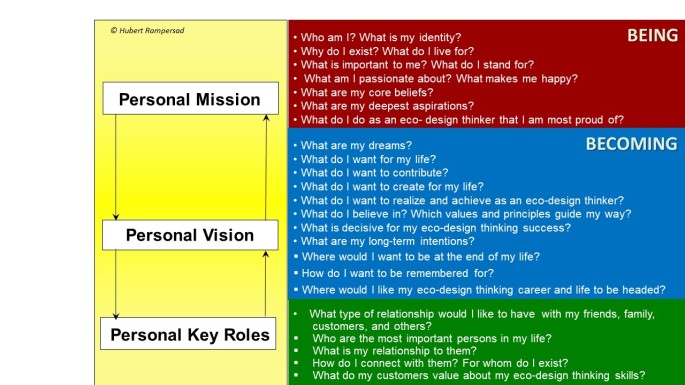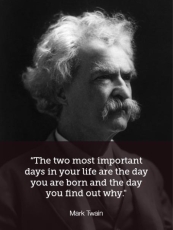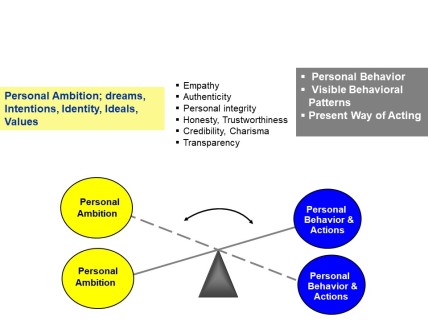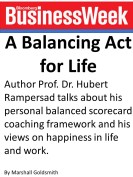How Sustainability Fuels Personal Innovation
The End of Design Thinking: Cultivating a Purpose-Driven Design Culture to Fix the World. Eco-design thinking starts with redesigning your life to become a disruptor. It goes beyond the traditional design thinking. It is based on my latest book, “Eco- Design Thinking for Personal, Corporate, and Social Innovation.” To design a better world, we must adopt new design methods and ways of thinking. As Einstein famously stated, “We cannot solve our problems with the same thinking we used when we created them.” That’s where eco-design thinking emerges, shifting from the traditional fixed mindset to a more dynamic growth mindset. The difference between these two approaches is illustrated in the figure below.
Design Thinking for Personal, Corporate, and Social Innovation.” To design a better world, we must adopt new design methods and ways of thinking. As Einstein famously stated, “We cannot solve our problems with the same thinking we used when we created them.” That’s where eco-design thinking emerges, shifting from the traditional fixed mindset to a more dynamic growth mindset. The difference between these two approaches is illustrated in the figure below.

Personal Disruptive Innovation Framework and Roadmap
Personal disruptive innovation entails a holistic methodology for redesigning your life to become a disruptor. It is an innovative approach that unlocks your creative potential by cultivating a strong growth mindset, creating new unique opportunities, disrupting your current target market, and allowing you to make a significant social impact. This model involves five steps to promote authenticity, integrity, and sustainability, as shown in this model: 1. Personal Ambition, 2. Personal Brand, 3. Personal Innovation Strategy, 4. Implementation, and 5. Personal Integrity & Empathy.

Personal disruptive innovation is based on a framework and roadmap that enable you to explore and redesign your life, build resilience and a strong mindset, and develop your personal brand, critical thinking skills, and personal integrity. By following this system, you can define your higher calling and discover your life’s purpose. As Elon Musk once said: “Don’t even attach yourself to a person, a place, a company, an organization, or a project. Attach yourself to a mission, a calling, a purpose only. That’s how you keep power and your peace. It worked pretty well for me this far”.
You can use the personal disruptive innovation model to become a visionary, imaginative, and empathetic individual. This involves using self-learning to translate your self-knowledge into personal innovation. It is an excellent way to develop skills such as resilience, authenticity, strategic thinking, and critical thinking that are crucial in the design process and this AI era. You cannot succeed as an empathetic designer and disruptive innovator without self-knowledge, personal innovation, a strong mindset, and personal integrity. This system can also help unleash your creative potential and imagination and improve your critical thinking abilities. Critical thinking is actively and skillfully analyzing information from observation, experience, reflection, reasoning, or communication to guide belief and action. Isaac Newton discovered gravity using his critical thinking skills. The personal disruptive innovation model has five phases:
system can also help unleash your creative potential and imagination and improve your critical thinking abilities. Critical thinking is actively and skillfully analyzing information from observation, experience, reflection, reasoning, or communication to guide belief and action. Isaac Newton discovered gravity using his critical thinking skills. The personal disruptive innovation model has five phases:
1. Personal Ambition: The initial step involves engaging in a reflective process that involves deep thinking, introspection, and self-reflection. During this phase, you’ll be introduced to breathing and silence exercises that will aid in developing self-awareness. Self-knowledge is the ultimate goal of this phase. The outcome of this phase will be the creation of your personal mission, vision, and critical roles, as illustrated in the diagram below. Remember what Elon Musk said: “Don’t even attach yourself to a person, a place, a company, an organization, or a project. Attach yourself to a mission, a calling, a purpose only. That’s how you keep power and your peace. It worked pretty well for me this far”. Through this process, you’ll gain insights into your life and acquire self-knowledge, self-awareness, and self-regulation, which are the building blocks of empathy, trustworthiness, integrity, creativity, imagination, and openness to learning. You can click on this link to view my personal ambition statement. This statement serves as the foundation of an innovative mindset.
By practicing breathing and silence exercises, you can better connect with your inner self and find answers to these questions. This will help you to discover your higher purpose. Through this process, you’ll cultivate self-knowledge, self-awareness, self-management, and self-learning, which entails a journey toward personal disruptive innovation, as shown in this diagram:

The best ideas come when you are alone. Self-learning – the ability to gather, process, retain, and evaluate knowledge alone — is the foundation of creativity and imagination. Traditional creativity approaches lack imagination because they neglect self-learning and, because of this, fail to address complex problems. They heavily rely on group meetings and, therefore, miss opportunities to develop innovative and imaginative ideas. Nikola Tesla developed many innovative ideas while working alone for over thirty years. Similarly, Stephen Hawking made significant discoveries while confined to his wheelchair, and Isaac Newton famously discovered gravity while in social isolation. Remember Nikola Tesla’s statement: “Being alone is when ideas are born. This is the secret of innovation”. Albert Einstein said almost the same: “Albert Einstein said almost the same: “Be a loner. That gives you time to wonder, to search for the truth. Have holy curiosity. Make your life worth living”.
Remember Nikola Tesla’s statement: “Being alone is when ideas are born. This is the secret of innovation”. Albert Einstein said almost the same: “Albert Einstein said almost the same: “Be a loner. That gives you time to wonder, to search for the truth. Have holy curiosity. Make your life worth living”.
Spirituality plays a vital role in eco-design thinking and innovation. It provides the intuition needed to make tough decisions and develop a higher level of consciousness. Elon Musk I once said, “We should aspire to increase the scope and scale of human consciousness to better understand what questions to ask. Really, the only thing that makes sense is to strive for greater collective enlightenment.” By inwardly focusing and reflecting on your actions through self-examination with breathing and silence exercises, you gain insights about yourself and your life’s purpose. This is what Einstein wanted to know. You will also find out why you were born. You will not only learn more but also the truth about yourself. As Thomas Huxley said, “Learn what is true to do what is right.” This process enables you
I once said, “We should aspire to increase the scope and scale of human consciousness to better understand what questions to ask. Really, the only thing that makes sense is to strive for greater collective enlightenment.” By inwardly focusing and reflecting on your actions through self-examination with breathing and silence exercises, you gain insights about yourself and your life’s purpose. This is what Einstein wanted to know. You will also find out why you were born. You will not only learn more but also the truth about yourself. As Thomas Huxley said, “Learn what is true to do what is right.” This process enables you To learn more and discover the truth about yourself. By formulating personal ambition, you initiate self-examination and prepare your mindset for action. This leads to inner involvement and self-assurance. As you become more conscious of yourself, you gain more creativity and innovation. To better understand oneself, challenges and learning opportunities help to enhance learning ability and lead to inner harmony, which is the foundation for personal disruptive innovation. Remember, the more you want to be innovative, the more you should develop self-knowledge. Read “How Mindful Meditation Boosts Critical Thinking in the Age of AI”.
To learn more and discover the truth about yourself. By formulating personal ambition, you initiate self-examination and prepare your mindset for action. This leads to inner involvement and self-assurance. As you become more conscious of yourself, you gain more creativity and innovation. To better understand oneself, challenges and learning opportunities help to enhance learning ability and lead to inner harmony, which is the foundation for personal disruptive innovation. Remember, the more you want to be innovative, the more you should develop self-knowledge. Read “How Mindful Meditation Boosts Critical Thinking in the Age of AI”.
By practicing the breathing and silence exercise, you can better connect with your inner voice and find answers to the abovementioned questions. This requires tuning into the same wavelength as your spirit, which is closely linked to the concept of synchronicity. Synchronicity refers to meaningful coincidences or events that co-occur without apparent cause. It is the connection between the ‘inner world’ and the ‘outer world’; consciousness bridges these two dimensions. Synchronicity can manifest in many ways, and I personally experience it daily. For example, I often notice the Number 57 is also my birth year when I glance at the clock. This number appears in other places like license plates, dates, addresses, and phone numbers, which I take as a sign from the universe that I am on the right path. I trust my intuition and pay attention to these signs, leading me to develop many innovative ideas, including the eco-design concept. Like Nikola Tesla, who was also in sync with the universe, I am acting like a receiver and tuned to the same frequency.
Number 57 is also my birth year when I glance at the clock. This number appears in other places like license plates, dates, addresses, and phone numbers, which I take as a sign from the universe that I am on the right path. I trust my intuition and pay attention to these signs, leading me to develop many innovative ideas, including the eco-design concept. Like Nikola Tesla, who was also in sync with the universe, I am acting like a receiver and tuned to the same frequency.
Your personal ambition comprises your mission, vision, and critical roles. Having a clear purpose is crucial to becoming a visionary. Elon Musk’s dream is to contribute to the world’s shift from fossil fuels to sustainable energy sources. He believes SpaceX, Tesla, and SolarCity’s goals are aligned with his vision to bring about positive change for humanity and the planet. His vision involves reducing global warming by promoting sustainable energy production and consumption and establishing a human colony on Mars to mitigate the risk of human extinction. According to Elon Musk, the thing that drives him is vision. He said, “I think having an inspiring and appealing future is important. There must be reasons you get up in the morning and want to live. Why do you want to live? What’s the point? What inspires you? What do you love about the future?” He also said: “When I was in college, I wanted to be involved in things that would change the world.”
2. Personal Brand: In this phase, you will define and formulate an authentic, distinctive, and memorable personal brand promise. This brand promise will be the focal point of your storytelling throughout each stage of the design process. Storytelling is an essential tool that can be used to engage with customers at different stages of the design thinking process. Take the time to create your eco-design thinking brand statement, ensuring it aligns with your ambition. Then, craft a compelling brand story to promote the brand called “You.” Please click on this link to view my personal brand statement. Elon Musk is an excellent example of a powerful personal brand and a brilliant storyteller. Based on this, he makes an emotional connection with his audience. Generative AI tool ChatGTP is a helpful tool for improving storytelling.
3. Personal innovation strategy: To bring your ambition to life, it’s crucial to take action. This means creating a well-rounded action plan (personal innovation strategy or personal balanced scorecard) based on your mission, vision, and key role. A personal innovation strategy includes a roadmap to help you develop a stronger mindset. Please click on this link to view my personal innovation strategy. Without continuous improvement based on your strategy, design thinking is superficial and won’t lead to long-term growth and success. Your personal critical success factors, which relate to your ambition and objectives, are broken down into four perspectives: internal, external, knowledge and learning, and financial. Your personal innovation strategy helps you turn your ambition into manageable, measurable objectives and milestones in a balanced way. Using this strategy, you can effectively manage your time and become more disciplined, proactive, innovative, and empathetic.
4. Implementation; Now that you have developed your personal innovation strategy, it’s essential to put it into action and maintain it. This applies to both your personal and professional life. To help you with this, I recommend following the PDAC cycle (Plan-Deploy-Act-Challenge) illustrated in the diagram below. This cycle should be consistently observed to ensure success.
Living by your personal innovation strategy and implementing it using the PDAC cycle can lead to self-awareness, flow, happiness, and personal growth. Your personal innovation strategy should be regularly updated to reflect new challenges, lessons learned, and growth. This means repeating the PDAC cycle multiple times. To become a successful eco-design thinker like Elon Musk, it’s essential to continuously improve yourself based on your personal innovation strategy and the PDAC cycle. These 50 tips will help you effectively implement your personal innovation strategy.
continuously improve yourself based on your personal innovation strategy and the PDAC cycle. These 50 tips will help you effectively implement your personal innovation strategy.
5. Personal Integrity & Empathy; The final stage in the personal disruptive innovation methodology entails aligning with oneself to improve personal integrity and empathy. This is lacking in AI because most algorithms are not designed with integrity in mind. They can lead to unjust or discriminatory outcomes, consequently undermining the integrity of the decision-making process. Generative AI raises important challenges and ethical considerations. For instance, generative AI models can inherit and perpetuate biases in training data, propagate hate speech and false information, and even generate content that potentially raises copyright issues. Here is where humans can help AI.
To help AI effectively, your personal ambition should reflect your true self and adhere to a moral and behavioral code that aligns with your ambition statement. Personal integrity begins with authenticity and balancing your ambition and behavior, as illustrated in the diagram below.
To help AI effectively, you must balance your ambition with your current behavior and actions. Finding a balance between your ambition and actions is crucial to achieving sustained personal growth and integrity. During this alignment process, it is essential to reflect on the following questions honestly:
- Am I staying true to my values and conscience in my actions?
- Are my thoughts and actions aligned consistently?
- How do my values and intentions relate to my current behavior?
- Is there congruity between my thoughts and my actions?
- Am I consistently acting according to my personal aspirations and empathetic nature?
- Does my personal ambition reflect my desire to act with ethics and empathy?
- Are there any discrepancies between my personal ambition and my empathetic actions?
- Do I keep the promises I make to myself?
- How do others perceive me and my values?
- Do they see me as someone who stays true to my core beliefs and remains authentic to myself?
To enhance empathy and personal integrity, aligning your personal ambition with your behavior is essential, as shown in the figure below. This involves achieving compatibility between the two elements so that they are in harmony. When there is a match between your personal ambition and behavior, you can work authentically and purposefully toward helping AI in the ethical decision-making process. This will lead to greater empathy and trustworthiness of AI.

Achieving harmony between personal ambition and behavior requires continuous attentiveness toward the impact of our actions on others, including humans, animals, plants, and the environment. Doing so allows us to become better individuals and AI more effective. We must ask ourselves: Have I always pursued my personal ambition? Have I always given my best effort? Have I always done what was right? Have I consistently demonstrated empathetic behavior? Have I consistently followed my conscience? AI does not have a conscience. So here you see again how this holistic personal disruptive innovation methodology can be of added value to AI. Read also my article “Cultivating Critical Thinking in the Age of AI“.
To gain more knowledge about this subject, you may consider attending his Orlando-Tampa Live Events:
Building a Purpose-Driven and Design-Driven Culture in Tech Companies
“How Sustainability and Generative AI Fuel Design Innovation”.
We also offer the Certified Eco-Design Thinking Practitioner Program to train design leaders how to coach their team members effectively (most bad designs are mainly caused by incompetent design leaders and their designers). The Personal Design Thinking Brand Coach Franchise program
coach their team members effectively (most bad designs are mainly caused by incompetent design leaders and their designers). The Personal Design Thinking Brand Coach Franchise program is also available to grow your design business. These unique design tools can be added to your design toolkit to enhance your design performance.
is also available to grow your design business. These unique design tools can be added to your design toolkit to enhance your design performance.
Hubert Rampersad, Ph.D., is a Dutch-American visionary leader in innovative solutions for genuine sustainability, disruptive design innovation, critical thinking in the age of AI, authentic personal branding, and entrepreneurial leadership. He holds a Ph.D. in Innovation Sciences, an MSc in Technology Engineering & Robotics, and a BSc in Mechanical Engineering from leading accredited universities in the Netherlands/Europe (Delft University of Technology, Eindhoven University of Technology). He is a well-known futurist, advocating for genuine sustainability on a global scale. With extensive knowledge and expertise, he has authored 25 books on the topics above in many languages and is highly regarded for his insights in these fields. One of his books, “Total Performance Scorecard,” has been published in 20 languages. Dorothy Leonard, an innovation professor at Harvard Business School, wrote the book’s foreword. Rampersad has also previously served as a guest lecturer at MIT Sloan and was featured in BusinessWeek. He was a design innovation coach at ASML, the most important tech company in the world and “Europe’s most valuable tech firm“.

Orlando, Florida | tpsi@live.com | Phone/whatsapp: +13053992116 | skype: h.rampersad







Interested to receive your Post
LikeLike
all good…. thanks
LikeLike
Love
LikeLike
It starts to make sense now
LikeLike
perfection!
LikeLike
I want you to help me to redesign my life
LikeLike